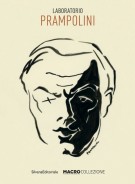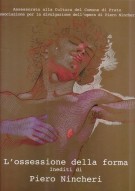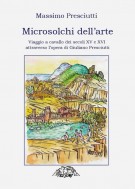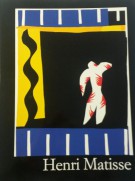Laboratorio Prampolini
| Autore/i | a cura Federica Pirani, Gianluca Riccio | ||
| Editore | Silvana Editoriale | Luogo | Milano |
| Anno | 2016 | Pagine | 128 |
| Dimensioni | 17x24 (cm) | Illustrazioni | 50 ill. a colori e b/n n.t. - colors and b/w ills |
| Legatura | bross. ill. a colori con alette - paperback | Conservazione | Nuovo - New |
| Lingua | Italiano/Inglese - Italian/English text | Peso | 600 (gr) |
| ISBN | 8836635407 | EAN-13 | 9788836635405 |
momentaneamente non disponibile
Roma, Macro, 11 novembre 2016 - 15 gennaio 2017.
Pittore, scenografo, scrittore e teorico, Prampolini (Modena, 1894 - Roma, 1956) aderisce al Futurismo nel 1912 ma sarà operativo nel campo dell’arte anche oltre il Futurismo, fino al 1956, anno della sua morte.
Il volume, nell’intento di offrire nuovi spunti di conoscenza e riflessione sull’artista, presenta i materiali conservati nell’archivio Prampolini – donato dagli eredi dell’artista al Comune di Roma e attualmente nella collezione del Macro – insieme a un cospicuo fondo di disegni e fotografie in gran parte inediti.
Questo materiale racconta da vicino la poliedricità del linguaggio prampoliniano e restituisce in pieno il senso di una ricerca costantemente rivolta alla sperimentazione e all’impegno in molteplici campi di attività: dal disegno alla pittura, dal teatro alla scenografia, dalla riflessione teorica alla produzione di scritti e manifesti, dalla ruolo di promotore e organizzatore culturale, all’insegnamento. (T-CA)
Rome, Macro, november 11 2016 - january 15 2017.
The decision to display the material from the Prampolini Archive – donated by the artist’s heirs to the City of Rome in 1992 and currently part of the MACRO collection – along with a large collection of largely unseen drawings and photographs by the Emilian artist as part of an exhibition in which the studio space overlaps with the archive space, presenting one by using materials from the other, is indicative of a movement that tends to associate a sense of beginning with the act of archiving, as opposed to that of command.
Exhibiting an archive, which is an increasingly common practice, recognises the process and cognitive value of the practice and reveals a critical perspective whereby the archive, which does not have to imitate the general catalogue with its information and dates, becomes the place in which “documents can both survive and regularly transform” via processes of interrogation and modification that also use artistic means.
Recognition of the intrinsic dual nature of an archive, which connects the principles of conservation and the production of memory, has helped to redefine the archive of one of the most important Italian artists of the twentieth century as a space for turning “a critical eye onto the present day, an opportunity for creation and action”. (T-CA)
Potrebbero interessarti anche...





